Volleyball drills
- The cards of a complete deck (including jokers) are placed face down on the ground at a central spot in the playing area.
- The players are divided over 4 teams in the 4 corners of the playing area.
- Every team has to collect different kind of cards: hearts, diamonds, spades, clubs.
- After signal, the first player of every team can go to the central point to collect 1 card.
- The player turns one card, and has to take it if it is the right kind (or a joker).
- If it is the wrong kind, he has to put it back face down.
- The next player can leave if he is tagged (relay race).
Which team is first in showing a line of 13 cards of their kind?
A large, thick mat in the middle of the field.
Surrounded by obstacles to hide behind.
A number of kids is on the mat and have to try to throw the other kids off the mat with the balls.
The other children have to try to get completely around the field before they can hand in, for example, a dot or a ring as a point.
Requirements:
Balls, thick mat, obstacles such as chest or carts, and dots or hats to be used as points.
- make 2 equal teams.
- Each team has 1 ball on their own field
- Trainer throws rally ball into field of a team
- Team plays 3 times before ball goes to the other team
- Player can have only 1 ball at the same time
- If the ball is dropped or similar, the other team scores a point.
- Stand up straight with your feet a bit wider than a shoulder's width apart.
- Grab your feet at the toes, while keeping your legs stretched.
- Move your hips downwards until between your ankles and move your breast forward.
- Move your hips back up again until your legs are stretched. Keep your back straight and keep holding your toes.
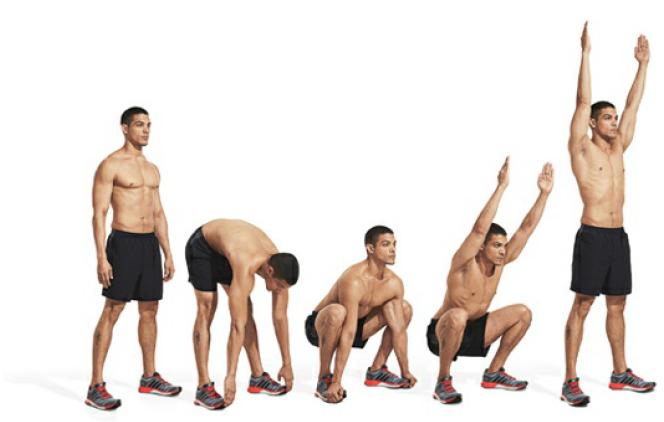
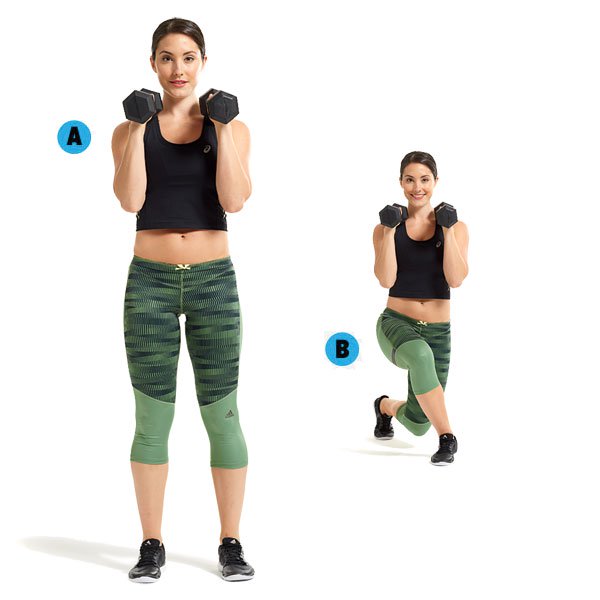 Start from an upright position
Start from an upright position
- Place your left foot diagonally behind your right foot, at a distance of about 60 cm.
- Rotate your hips back in the direction your right foot is pointing.
- Lower your right leg and keep the heel of your right foot on the ground
- Return to the starting position and repeat the movement with your other body half.
- Repeat these movements a number of times.
- Make a step backwards with your right foot from an upright position.
- Turn your torso towards your left knee, while you reach up as far as possible with your right hand.
- Turn back, get back up again, and repeat the same movement with the other side of your body.
- Repeat these movements a number of times.
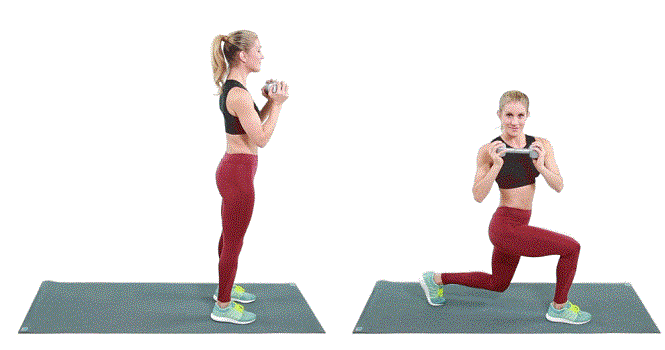
- Take a large step forward with your right foot from an upright position
- Put your left hand on the ground, at a shoulder's width distance beside your right foot, and divide your weight over your left hand and right foot.
- Bend your right arm, and bring your right elbow to the ground between your left hand and your right foot.
- Put your right hand next to your right foot. Do this on the outside, and not on the side here you previously had placed your elbow.
- Raise your hips, stretch both legs, and have your right foot point upwards.
- Return to the starting position and repeat the same movement with your left foot and right hand.
- Repeat these movements a number of times
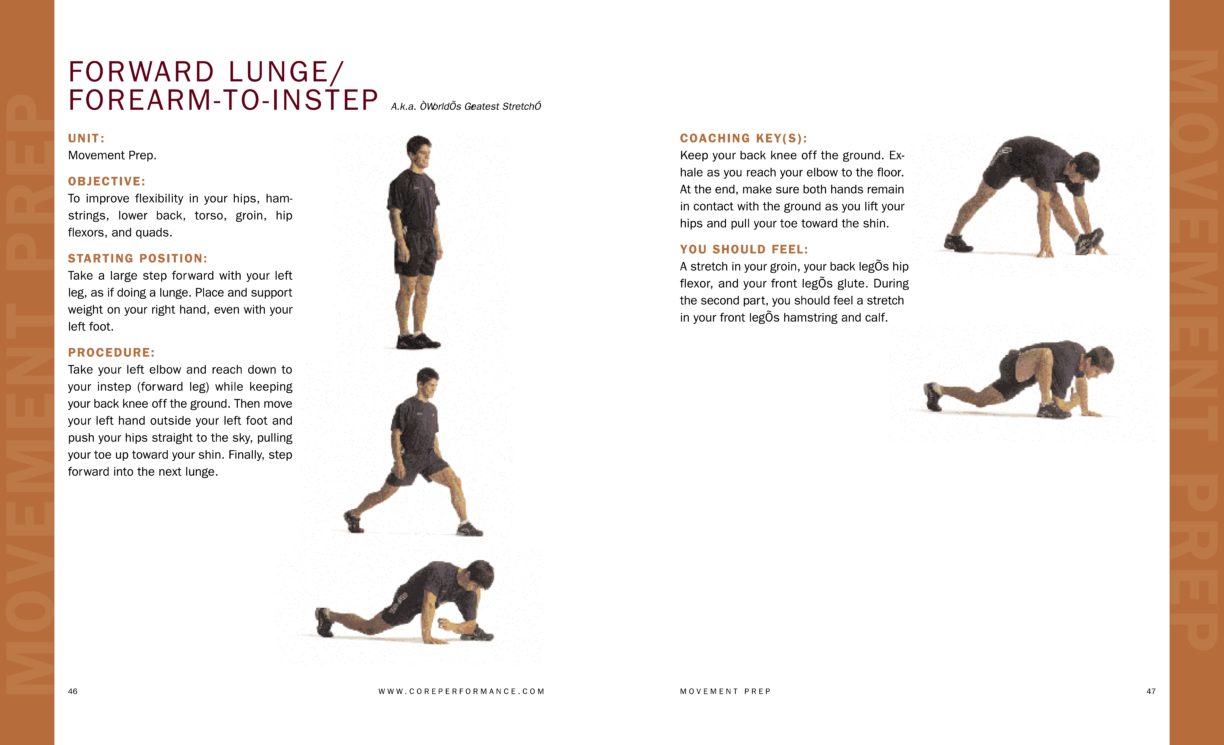
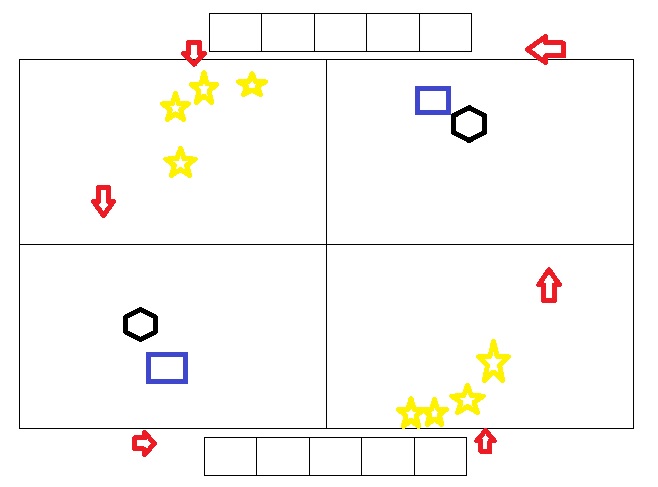
Basic exercise:
- Trainer throws the ball, player catches the ball and puts it in the cart.
- Then the player goes to the ladder, goes through it, and joins the next line.
Differentiation/Expansion:
- Throw difficult balls (left and right, front and back).
- Play underhand for themselves and catch.
- Two players get ready next to each other and have to call let go.
- A setupper is added who has to catch the underhand ball.
- An attacker is added who has to play the setupper's ball over the net.
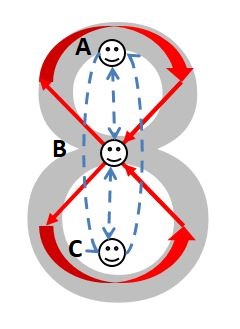
- Make trios
- Each trio has a ball.
- Player in the middle keeps running an 8. Every time this player comes in the middle, a ball is thrown:
- A throws (or plays overarm) the ball to B (in the middle)
- B throws the ball underhand back to A and then runs around A until he is back in the middle.
- Meanwhile, A plays the ball to C
- C returns the ball overarm to B.
- B plays the ball underhand back to C and then runs around C until he is back in the middle.
- Enz.
- after 2-3 minutes the player in the middle is changed.
Variation:
- To make it simpler, player A and C can throw instead of playing overarm. Could be underhand throwing/catching or overarm throwing/catching.
- To practice standing still when playing/throwing, player B can throw and catch underhand.
- The team is divided in 2 groups.
- Place a group on both sides of the net.
- 1 side will serve, the other side positions 3 passers
- They try to pass the ball high and this has to be caught on their own side.
- Servers take turns.
- A new passer will enter the field to replace the one who has caught the ball.
2 They play until 10 points. The servers score a point if the ball is not caught. The passers get a point if it is caught. Incorrect service does not count. After a round, they switch sides.deround with 2 passers instead of 3.
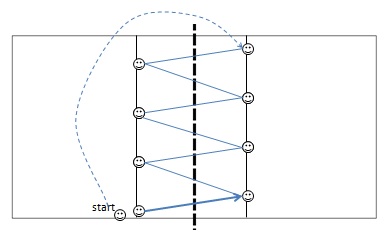
Divide over 3m line. Throw ball in zig-zag pattern and follow. See picture.
Later, play underhand, only overarm. One side of the net underhand, other side overarm.
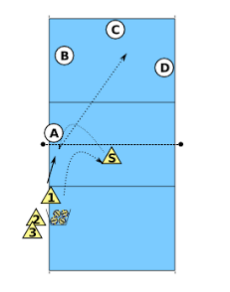
- this exercise, the attackers get the mission to immediately score with their attack. The defense has to prevent this of course.
A permanent playmaker is used. A number of attackers is on one side of the playing field with a ball. They play the ball to the playmaker, who will give the set up for the attacker.
If the attacker scores, he joins the back of the line of attackers (as reward). If the attacker does not score, he has to defend. Rotating happens in the following way. attacker - A - B - C - D - attacker.
In defense, A is the blocker.
Make it clear upfront what immediate scoring means: ball on the ground, even if there is no playable defense. - permanent playmaker
- line of attackers with ball plays ball to sv
- Set-up to attacker 1
- If attack scores, join line attackers
- Otherwise attacker 1 to A - B - C- D- attacker
- In defense: A = blocker, BCD= back







